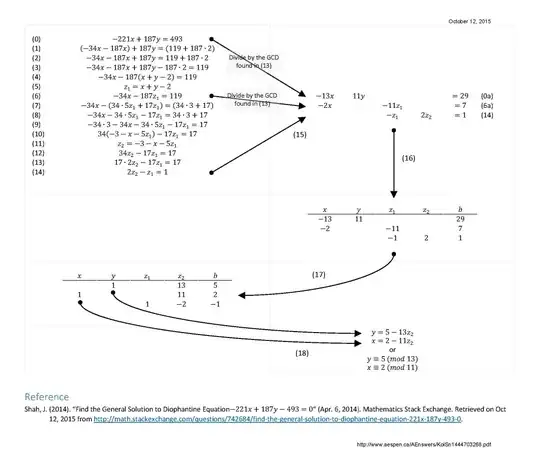I have to find the general solution to
$$-221x + 187y - 493 = 0$$ The main issue, I'm figuring out if I have found the general solution or not. Below, are my steps:
The $\gcd{(-221,187)} = 17$ and $\gcd{(-221,187)} \mid -493 = -29$.
\begin{align} &221 = 187 + 34 \\ &187 = 34(5) + 17 \\ &34 = 17(2) \end{align}
Then from here, I go in reverse and do the following:
\begin{align} 17 &= 187 - 34(5) \\ &= 187 - 5(221 - 187) \\ &= 187 - 5(221) + 5(187) \\ &= -5(221) + 6(187) \\ &= 221(-5) + 187(6) \end{align}
Then from here, I rearrange the equation to get
$$221(-5) + 187(6) - 17$$
However, this doesn't resemble my original equation, so I have to multiple everything by $29$ to get
$$-221(145) + 187(174) - 493 = 0$$
So now my $x$ equation should be in the form of $x = x_0 + jb$ and $y = y_0 - ja$, where $j \in \mathbb{Z}$. My general solution should be:
\begin{align} &x = 145 + \frac{174}{29}j = 145 + 11j \\ &y = 174 - \frac{-221}{29}j = 174 + 13j \end{align}
So, is that correct and is this how you would solve these linear Diophantine equations?
Thanks a lot!
